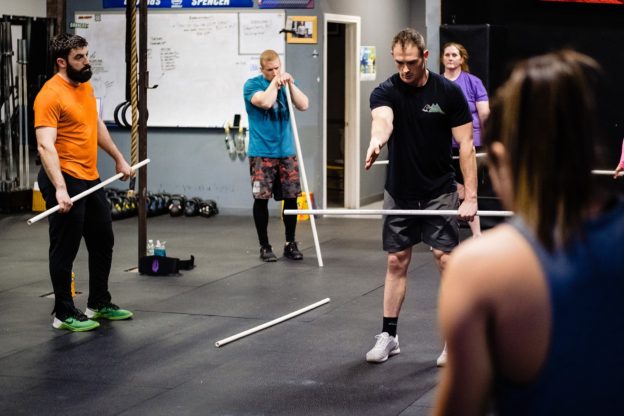How Your Athletes Can PR Every Day

Sometimes it’s not all about the highest score, the biggest lift, or the fastest time in a workout. While these metrics are great for a testing or competitive environment, there are plenty of other ways you can help your athletes gauge their progress from day to day. Here are a couple quick tips on how you can challenge your athletes and turn single every day into a PR opportunity.
Example Workout
2 Rounds For Time
55 Wallballs 20/14lbs
Run 400m
20 Pull Ups
The Max Set PR
How many of your athletes can do 55 wall balls unbroken? In 2 sets? How many have tried? Challenge athletes to go bigger than they think they should in a given movement. Yes, their overall workout time may slow down a little, but the confidence gained after doing something like that will have a far greater impact than a “fast” time on an arbitrary workout that likely won’t be repeated. An athlete who learns they can do 55 wallballs unbroken may look at a set of 20 with a very different attitude next time they show up in a workout.
The Transition PR
As coaches, we want to try and minimize the number of breaks athletes take within workouts, but how can you get your athletes to actually put this into practice? Try this: “Ok guys, your goal today is that no matter what, you finish your 400 by jogging ALL THE WAY to your pull up bar and IMMEDIATELY hopping up and knocking out a set, no matter how small.” Boom. This helps teach athletes that although they feel tired, they can still continue working in some way and gain confidence in movements that they may not have had before.
The Weakness PR
If you know your athletes well, you can probably pick which of these three movements they like the least. Those who love to run may not be so keen with a big set of wallballs, and those who are pull up ninjas may dread that 400. In any case, challenge your athletes to pick their weakness within the workout and attack it, regardless of what that means for their overall score. For the runner, challenge them to do no more than 3 sets of wallballs, even if that means taking an extra 10 seconds of rest. For the pull up ninja, put a 1:30 time cap on their 400m run, even if that means they have to catch their breath before getting on the pull up bar. Again, this may yield a slower overall time, but will benefit athletes in the long run by working on their weaknesses.
The Technique PR
I love when athletes hit technique PRs. A technique PR is exactly what it sounds like – when an athlete doesn’t necessarily do MORE, but they do it BETTER. A heavier but ugly lift could be attributed to the stars aligning or a brutish but successful fight with a barbell. An athlete getting themselves over the rings is an excellent feat, but chicken winging to do it isn’t ideal. A technique PR tells me that the athlete is moving better, more efficiently, safer, and will therefore get fitter. Communicate this to your athletes: improving the way they move is a PR in itself and should be treated the same as a new deadlift or squat PR.
Setting the fastest time or biggest lift is great, and there’s always a place for that. But as a coach, give your athletes other ways to measure progress and even PR every day, especially if you don’t regularly test and re-test workouts or lifts. Teach them something about their abilities and the confidence gained will be a PR in itself. Get after it!
Written by Hunter Wood




Responses